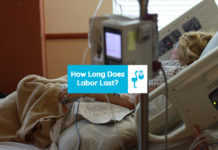A birth plan is a list of preferences about the course of events during labor. First-time moms have to predict what all can possibly happen and plan accordingly. For this reason, expecting mothers should have a birth plan.
Why do you need a birth plan? Well, because during labor you’d be a mad seal, and all you say would be Hebrew for others. ?
On a serious note, a lot can happen during labor unexpectedly. When you will be in pain and people around under pressure it can be very difficult to make decisions. The hospital staff cannot act according to your preferences unless notified beforehand. You have to decide about the use of epidural, baby’s feed, the position of delivery, and environment. Even if you think at present that you can decide it at that time, you must make a plan!

What is a birth plan?
A birth plan is a checklist answering questions about your preferences and dislikes. The questions are about the environment, kind of labor, and many more things. When you will let the doula and/or the OB about your choices you’ll be able to focus on your work.
The outline will allow your labor to be more comfortable and personalized. While the importance of a birth plan remains unquestioned there can be last-minute changes. In fact, it is just a list of your choices during a certain situation that may occur at that time.
The birth plan also includes things such as the lighting of the labor room, music, snacks, and assistance. Whether you want to sit on your knees or lie down can also be mentioned in the plan. Another important component of the checklist is your consent to use pain medications.
What is the purpose of a birth plan?
A birth plan template not only helps your birthing plan but also informs you about the possibilities. You get to know choices regarding the positions of giving birth or the use of external support to suck out the baby. The various kinds of medicine available to help you during labor pain are there in the birth plan examples. A sample birth plan before writing your own will eliminate unnecessary details. Use a birth plan checklist or birth plan worksheet available.
What all to include in a birth plan?
Birth plan samples can show lengthy lists regarding pregnancy planning. However, just like any other formal document it has to be short and precise. Writing a long plan would increase the chances of missing out on key details.
A natural birth plan has to accept the possibility of having a C-section under complications. So jotting down too much is not needed because doctors know their job. It is not a how-to do manual you have to teach the OB. You just have to give answers to possible questions that will help them do their work.
How to write a birth plan?
There are many things that you can include in your birthing plan. You can consider several factors while planning how you will give birth.
Items to include in a birth plan:
1. Personal information
The first things you’ll write in the birth plan are the names of you, family members, and the gynecologist dealing with your case. You have to clearly mention the names of people you want to be along with. This will enable the staff to allow only the ones you want.
2. Pain medications
Every woman has a different level of pain tolerance. You may not be able to gauge your threshold and opt-out of having pain medications. But it is possible that the conditions change so you need alternatives. Massage or ice chips for comfort must also go on that list.
3. Seating and lying down tools
You may want to have a birthing chair or lie down while giving birth. The extent of inclination you want while labor is also a point in the list. Squatting is another way of positioning during delivery.
4. Filming permission
Whether or not you want your partner to click photos is your choice. However, in cases of a C-section and other procedures, your doctor may prevent such activity. You can have someone holding a mirror to allow you to see your baby coming out.
5. The way of giving birth
You can have a water birth or natural vaginal birth. If you are not in favor of getting a C section or episiotomy you need to let your doctor know. Other than that you must write about the lights of the labor room.
6. Extra accessories
Soft music or some snacks to help you along the labor need to be present before. You can mention if you want a particular stool or chair. If you want to bring your squat mat or music write it. Hospitals have bean bags, in-room showers, birth balls, and tubs. You can choose from the birth tools.
7. Interaction with the baby
Mention whether after having your baby whether you want it to be with you or in the NICU. You can mention it if you want to bathe your baby or have your partner do it. Your presence during the bathing of a baby requires informing as a part of the plan. If you don’t want to interact with your baby immediately or only when awake, jot it down.
8. Lactation and feeding newborn
Whether or not you will breastfeed your child is something you can decide way before. This decision won’t change unless you decide to do so. Expecting mothers might want to breastfeed along with formula. You can submit the plan so that the nurses are aware.
9. Pacifying the newborn
If you want your baby to have a pacifier, do write it. Similarly, inform the ones attending your baby about your allergies and other possible reactions. You can prevent them from giving any antibiotics or optional vaccinations.
10. Assisted birth
If you want a suction or forceps to help you push during labor mention it. There are vaginal examinations during delivery. If you don’t want continuous or multiple times viewing your female parts then you can deny the permission.
11. Post delivery period
After giving birth your partner can cut the umbilical cord. You can also give your body heat to the baby by skin-to-skin contact. Whether you want to stay inside the labor room or discharge asap is up to you. Other than that if you are having a doula or midwife to assist you her presence needs a written consent.
12. Placenta delivery and third stage of labor
Some women want to bank the baby’s stem cells or get placenta encapsulation. Only a few hospitals have the provisions for storing the placenta. You need to find the one that allows you to store the placenta in a hygienic state. If you don’t want to store your baby’s stem cells then you can prevent them from preserving them.
13. Religious customs
Some sects have particular religious proceedings after birth. However, the hospital regulations are strict about allowing such activities. If you want your baby to get circumcision then put every detail about it clearly. Discuss this with your doctor about who will do the procedure.
What should I do before writing a birth plan?
Before you finalize your birth plan try to get to know things. You can join some classes for moms-to-be. Labor coaches or doula can help you learn and practice some baby birth skills. One must meet other women who went to the same hospital or birth center. Try to get to know things. Without fail check your hospital’s birth and delivery policies. If there is a conflict between what the regulations say and your desire, sort it out.
Your birth partner plays a crucial role. Adequate discussions and getting to know each other well will help you a lot. The midwife you appoint can have the role of a wet nurse to your baby. You need to make sure she is ready near your due date. Attend all prenatal checkups and get counseling about your pregnancy.
What after writing a birth plan?
You must submit a copy of your birth plan to your doula or birth partner. Discuss with them the possible diversions from your plan. Have a second choice and make necessary changes in conditions which they recommend. Allow them to review it. And always keep in mind that things can and will happen out of the blue.
Avoid having negative or strict instructions in your birth plan. Keep the language and mindset more flexible and positive.
Do not include phrases that have a lot of negation. Instead, opt for sentences that only highlight your preferences.
There is no doubt that you are going to give birth but doctors and nurses have vast experience.
Be confident and take charge of your mind and body. The pain of twenty bones breaking together is scary but is a myth. You must be optimistic and calm. The more you will panic the more you will feel out of control. A birth plan considers everything from vaginal delivery to episiotomy or C section. But even during labor you can ask if there is an emergency and think about it.
You must mention conditions such as rapid labor or preterm delivery (Read: How Long Does Labor Last?). Do not feel pressured to do something if you don’t want to. At the same time don’t be adamant to regret later.





![Why Do You Fast Before Cesarean? [Fasting Before C-Section Facts] Why do you fast before Caesarean?](https://www.pregnanteve.com/wp-content/uploads/2019/03/fast_before_cesarean-218x150.jpg)



